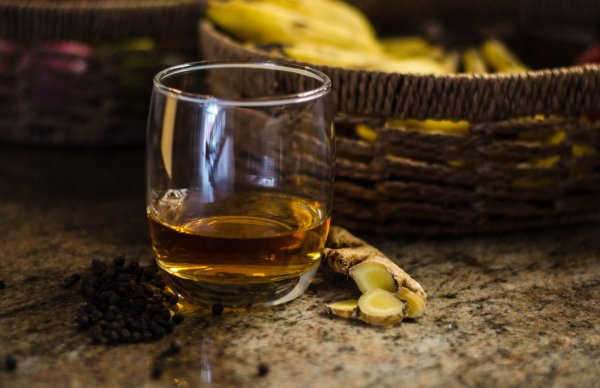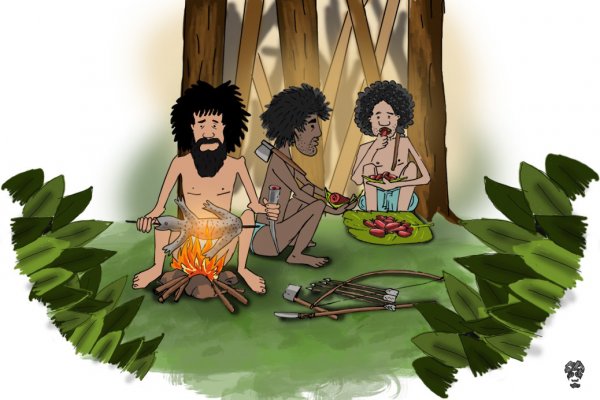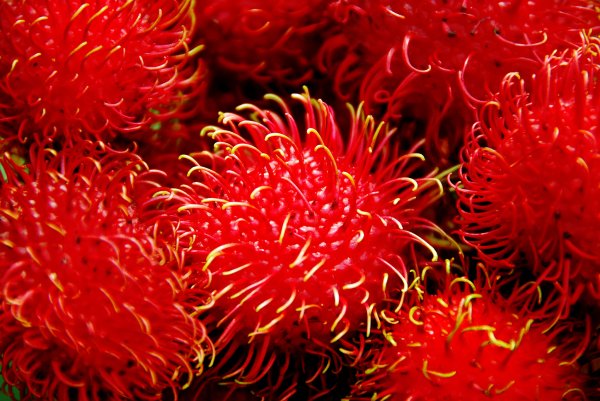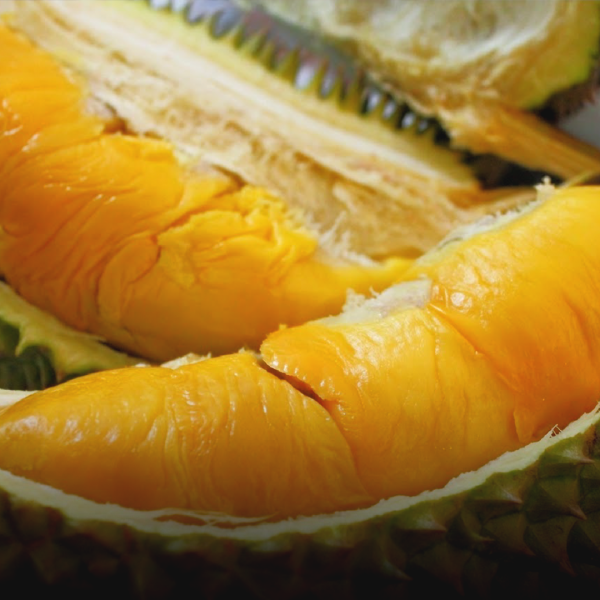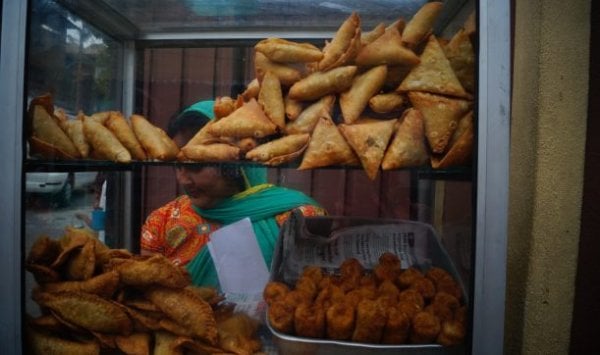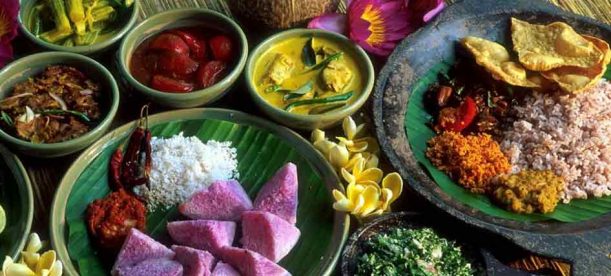
The Sri Lankan food culture is amazing. What with our fascinating fusion of local delicacies along with an array of cuisine adapted from various countries over the centuries, we have inherited a truly unique culinary heritage ‒ and developed some pretty distinctive culinary quirks along the way too.
Many of these food-related idiosyncrasies we Sri Lankans have adopted have resulted in a pretty remarkable food culture. Our local food is diverse, delectable, and very nearly addictive (just ask those poor, home-sick Lankans overseas who spend their days hankering for some good old pol sambol), but what is truly great about Sri Lankan cuisine, is that is does more than just cater to the taste department ‒ it is also remarkably healthy. With traditional recipes like kola kenda, mallung, diya buth, ambul thiyal, halape and an assortment of vegetable curries, we boast of a whole collection of local food which is not only delicious, but also nutritionally wholesome. Our land is rich in exotic fruit and vegetables, we have more edible green leaves than we can count, and we thrive on long-standing healthy habits like using kithul treacle instead of refined sugar.

Made out of gotukola, grated coconut, onions, tomatoes and maldive fish, gotukola sambol is one of the tastiest and healthiest dishes you can find on a Sri Lankan menu/Credits: riceandcurry.wordpress.com
However, in spite of all that healthy gotukola sambol and kankun we have been downing over the years, we still find Sri Lankans appallingly susceptible to diet-related chronic diseases. Conditions like diabetes, hypertension, and heart disease are playing havoc with people’s health, and account for 18.3% of all deaths in the country. Pot bellies are a somewhat disturbingly common sight (really, have you ever stepped out of your house and not seen one?), and obesity, which is prevalent among 25.2% of Sri Lankan adults, is alarmingly on the rise. Iron deficiency, Vitamin A deficiency and protein energy malnutrition are also not uncommon in some segments of the local population, especially among children. If our food is so healthy, how can this be happening?
The answer is quite simple really; we’ve got some wonderfully wholesome food ‒ with some very bad eating habits. Here are some of those local culinary quirks that we should try to do away with (or at least tone down) for a healthier lifestyle.
The Rice Dilemma

Piled high! A typical Sri Lankan serving of rice/ Credits: faimouioui.wordpress.com
We Sri Lankans love our rice. A lot. We pile it high on our plates into what resembles a small mountain, serve little smidgens of the curries around it, and then proceed to gorge down the whole thing with gusto.
If you come to think of it, the ratio of rice to vegetables to meat/fish on a typical Sri Lankan’s plate seems to go something along the lines of 15 parts rice, 2 parts vegetables, and 1 part meat or fish ‒ almost ridiculously lopsided. And if that isn’t bad enough, most locals tend to have rice for all three meals. End result? An explosion of carbohydrates which our bodies simply don’t need.
Our incurable infatuation with rice also carries another potential health hazard. According to the British Medical Journal, a high consumption of white rice can increase your risk of type-2 diabetes, most probably due to its high Glycemic Index.
It’s one thing to pile on the calories if you are a farmer working all day in a field, but we are pretty sure that most of you out there reading this are not farmers and lead pretty sedentary lifestyles. So yes, we know you love your heaping helpings of rice, and yes, it is the staple food of our country, but if you don’t want to die an early death, we suggest you start increasing your potions of veggies and meat/fish and reducing your servings of rice. Fast.
Carbs Surplus

String hoppers made from kurakkan flour: if you must have your carbs, then switching to kurakkan flour could do you good/ Credits: thepalindromic.wordpress.com
We Sri Lankans consume way too many carbohydrates. Think about it ‒ if we are not eating rice, then we are eating string hoppers, manioc, sweet potato, hoppers, pittu, roti, or some starchy cereal or the other that is simply chock full of carbs. In fact, research reveals that Sri Lankan adults get 71.2% of their energy from carbohydrates, with only 10.8% from proteins, and 18.9% from fats. Worryingly, evidence suggests that our predominantly carbohydrate diet is mainly to blame for the high prevalence of diabetes among Sri Lankan adults.
Low Diet Diversity
 A balanced meal; how often has your plate looked like this? Credits: mylifeinsin.wordpress.com
A balanced meal; how often has your plate looked like this? Credits: mylifeinsin.wordpress.com
We’ve got a pretty diverse range of foods on the local menu, but unfortunately, we don’t really plan our meals accordingly. In spite of learning all about the importance of balanced diets when we were kids in second grade, our meals are often about as unbalanced as it can get. In a study conducted to investigate the correlation between low dietary diversity and obesity in Sri Lanka, it was observed that nearly 5% of the participants were recorded to have had practically starch-only meals for the whole day (think rice and potato curry, for example). Now, not only do such eating habits add pounds to your weight, but they can also send your blood sugar levels spiking through the roof.
Strangely, in spite of being a country rich in natural produce, Sri Lankans were also discovered to have a very low consumption of fruits and vegetables (with a mango now being sold for Rs. 80, this could, of course, be partly due to high prices). We also tend to consume an inadequate amount of dairy products, like milk.
Coconut Craze

Can’t live without it! Coconut accounts for nearly 20% of a Sri Lankans calorie intake/ Credits: stylecraze.com
If rice had to be kicked out of its place as staple food of this country, we are pretty sure it would be replaced with coconut.
In Sri Lanka, a kitchen isn’t really a kitchen unless it has a coconut scraper and a small pile of coconuts in it. Puddings, curries, vegetable dishes, sambols, mallungs, sweets, rotis, pittu, you name it; we use coconut in some form or the other (coconut milk, grated coconut etc.) in practically everything we eat.
 Sri Lankan Food Consumption (1980 – 2010). Data courtesy Department of Census and Statistics.
Sri Lankan Food Consumption (1980 – 2010). Data courtesy Department of Census and Statistics.
Now, eating coconut isn’t necessarily a bad thing. This tropical superfood comes loaded with antioxidants, vitamins, and minerals, and coconut milk is considered a healthy substitute for many dairy products. It does have a high content of saturated fats, but it is considered to be the good kind that does not clog up your arteries or play hell with your heart like people once thought it did. However, moderation is the key to everything, and unfortunately, we Sri Lankans don’t know the meaning of moderation. If we’re doing something, we go the whole hog without any bell or break, and this is the same case with our coconut consumption. Coconut is high in calories: just one cup of undiluted coconut milk can contain up to a third of your daily calorie requirements ‒ and anyway, with all those fats, excessive use of it in your daily diet is clearly detrimental to your health, especially weight-wise. In fact, if you want to go on a diet, one of the first things a dietician in Sri Lanka would tell you is to moderate the use of coconut milk in your dishes!
The Kottu Question
 Oozing with cheese, scrumptiousness, and a whole lot of disease. Credits: foodacrossborderz.wordpress.com
Oozing with cheese, scrumptiousness, and a whole lot of disease. Credits: foodacrossborderz.wordpress.com
It’s official, people: too much kottu can kill you. And this time, we have research to prove it. A study conducted by the Medical Research Institute in 2012 has shown that 50% of the people who regularly make a meal out of food like kottu and fried rice have high cholesterol and liver enzyme levels ‒ giving them a very good chance of suffering from a heart attack, or some other cholesterol related problem. Besides, not only does kottu contain a boatload of harmful trans-fatty acids, but most eateries that sell such food also tend to lack any notion of health and hygiene (watch out for cockroaches in your kottu serving). It is heart breaking news, we know, but if you really want to live long and healthy, you are going to have to reduce the amount of cheese kottu you chow down.
Heavy Dinners
 Eating dinner like there is no tomorrow; a Sri Lankan food quirk. Credits: 1stslice.com
Eating dinner like there is no tomorrow; a Sri Lankan food quirk. Credits: 1stslice.com
Ever heard of that old saying about eating breakfast like a king and dinner like a pauper? Turns out there is a pretty good reason behind it.
With our usual knack of doing the opposite of what is right, we Sri Lankans like to have heavy dinners. With our characteristic zeal for food, we eat up huge servings of kottu/ rice/ noodles/ pasta (if you want proof, just have a look at our very frequent dinner parties) and then go straight to sleep, mostly quite late. This inveterate habit of eating heavily at night happens to be one of the cardinal sins of healthy living. No, this is not one of those baseless weight-loss myths that flash all over the internet; many studies have found actual evidence that late meals are detrimental to health in more ways than one. So tone down those huge dinners, and try to eat lightly at night.
The Oil Problem
 An oily snack; fried short eats like patties and rolls are pretty popular in Sri Lanka. Credits: 1080.plus
An oily snack; fried short eats like patties and rolls are pretty popular in Sri Lanka. Credits: 1080.plus
Another bad habit we have acquired is that tendency to use cheap, refined coconut oil in our cooking.
Now with all that tempering and frying we are eternally doing in our kitchens, we are pretty liberal with oil. In fact, most of our snacks and sweets (like short-eats, vadai, kevum and other traditional sweets) happen to be deep-fried. Unfortunately, what most of us Sri Lankans use is the less costly, less healthy, refined coconut oil. Now refined oil does have its advantages, but it has been found that many Sri Lankan coconut oil producers (some even bearing the SLS mark) fail to follow food safety procedures, with their brands of oil containing harmful levels of chemical residue and toxins.
Festive Foods
 Mouth-watering kevum; with stuff like this on the menu, it’s no wonder health takes a backseat during festivals. Credits: YamuTV
Mouth-watering kevum; with stuff like this on the menu, it’s no wonder health takes a backseat during festivals. Credits: YamuTV
Being a multicultural country sure has it perks, especially when it comes to holidays.
It doesn’t matter if it is Avurudu and you are not a Sinhalese/Tamil, Eid-ul-Fitr and you are not a Muslim, or Christmas and you are not a Christian; come evening, you can be sure your neighbour will turn up at the door with an enormous platter of oil cakes/watalappam/Christmas cake that will spell death to your weight-loss regime and send all thoughts of healthy eating straight out of the window.
Unlike Westerners, we Sri Lankans celebrate quite a number of festivals annually. And the highlight of each celebration unfortunately happens to be the food (try to picture Avurudu without kevum and kokis, or Eid without watalappam. Impossible, isn’t it? ) Often deep-fried in oil and full of sugar and wheat flour, most of these tempting delicacies are unhealthy, fattening, and about as unwholesome as they can get.
Now we know that most of you would rather poke your eyes out than miss out on your festive spread, so the next best thing to do is to exercise moderation. Yes, that dodol is heavenly, and yes, the kevum is practically calling out to you, but try not to gamble your health away for a mere extra serving of sweet meats.
We are not asking you to renounce all our marvelous food and live on salads like a rabbit ‒ life would be pretty miserable if we did. Just try to make little tweaks to your daily diet; use kurakkan flour instead of rice flour when possible. Make your usual serving of rice a small hillock instead of the customary mountain. Eat lots of fruits and vegetables, tone down your daily use of coconut, and stop adding a truckload of sugar to your morning cup of tea. These steps may seem too insignificant to make any real difference at first, but in the long run, they will. Here’s to a healthier Sri Lanka!
Cover image credit: kadjuhouse.com


